Flint Bypassed, Meigs Not
Comment via blog
Prev
Next


|
Day 7: September 4, 2013 Flint Bypassed, Meigs Not Comment via blog |
Prev Next |
 
|
|
|
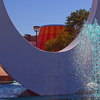
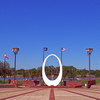
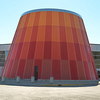 The drive across Michigan's thumb between Harbor Beach and Bay City was
unremarkable other than the fact that I had no cell phone service between
those two towns. The name Bad Axe has always intrigued me and I asked the
motel clerk where it came from. She was actually apologetic when she told
me it was not a very good story. Surveyors on some unknown (to her) date
had discovered a broken axe and had noted its location on their map with
the words "bad axe". Yep, that isn't as good as the story I
expected.
The drive across Michigan's thumb between Harbor Beach and Bay City was
unremarkable other than the fact that I had no cell phone service between
those two towns. The name Bad Axe has always intrigued me and I asked the
motel clerk where it came from. She was actually apologetic when she told
me it was not a very good story. Surveyors on some unknown (to her) date
had discovered a broken axe and had noted its location on their map with
the words "bad axe". Yep, that isn't as good as the story I
expected.
The Port Huron Loop connected with the Dixie Highway east trunk in Bay City on the west side of the Saginaw River. These pictures are from the east side. The eye catching truncated cone contains the Delta College Planetarium. It is just across the street from Wenonah Park and its centerpiece, the Friendship Fountain. |
|
|
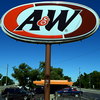
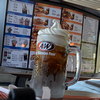 I left Bay City on something called the Flint Bypass Loop. In the early
days of motoring, most cities wanted significant routes to go through the
center of town in hopes that motorists would bring business. The motorists
were also generally in favor of this since it gave them the best chance of
finding fuel and other necessities. Loops were almost always created to
connect a town with a route that it was not naturally on. The Flint Bypass
is the exception. I don't know whether Flint wanted to keep travelers at a
distance or whether travelers wanted to avoid the town Whatever the
reason, the loop departs from the main Dixie Highway in Bay City and
rejoins it about seventy miles south near Clarkston. It is not a
particularly exciting route but I did find some pleasure in an old
fashioned root beer float at an old fashioned A & W drive-in in
Ortonville.
I left Bay City on something called the Flint Bypass Loop. In the early
days of motoring, most cities wanted significant routes to go through the
center of town in hopes that motorists would bring business. The motorists
were also generally in favor of this since it gave them the best chance of
finding fuel and other necessities. Loops were almost always created to
connect a town with a route that it was not naturally on. The Flint Bypass
is the exception. I don't know whether Flint wanted to keep travelers at a
distance or whether travelers wanted to avoid the town Whatever the
reason, the loop departs from the main Dixie Highway in Bay City and
rejoins it about seventy miles south near Clarkston. It is not a
particularly exciting route but I did find some pleasure in an old
fashioned root beer float at an old fashioned A & W drive-in in
Ortonville.
|
|
|
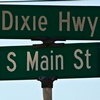 The bypass is on Clarkston's Main Street when it rejoins the mainline.
The bypass is on Clarkston's Main Street when it rejoins the mainline.
|
|
|
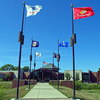
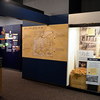
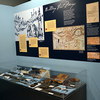
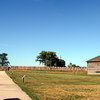
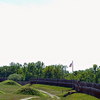
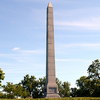 I had been thinking of visiting Fort Meigs, south of Toledo, if timing worked out and
it did. The fort was built in the spring of 1813 and withstood two seiges
under the command of General William Henry Harrison. Toward the end of the
summer, it was downsized to function as a supply depot while Harrison
marched the garrison north to eventually defeat the British at the Battle
of the Thames.
I had been thinking of visiting Fort Meigs, south of Toledo, if timing worked out and
it did. The fort was built in the spring of 1813 and withstood two seiges
under the command of General William Henry Harrison. Toward the end of the
summer, it was downsized to function as a supply depot while Harrison
marched the garrison north to eventually defeat the British at the Battle
of the Thames.
There is a nice museum whose displays include many items found at the site. This being the fort's bicentennial year, the displays are augmented by several items on loan from other collections. Two that I found especially interesting were Anthony Wayne's spurs and Henry Proctor's watch fob. The spurs, of course, have no direct connection with the War of 1812 but Henry's chain and fob were captured at the Battle of the Thames when he abandoned them in a carriage. The entire fort has been reconstructed which makes this the largest reconstructed wooden-walled fort in the nation. Several of the blockhouses contain museum style displays. The tall monument was erected in 1908. Shortly after leaving the fort I was on I-75 heading home. |
|
|
| [Prev] [Site Home] [Trip Home] [Contact] [Next] |